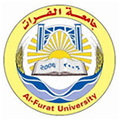آخر الأخبار
تأثير درجات الحرارة والرطوبة النسبية والجنس في بعض المؤشرات الفيزيولوجية عند العجول الرضيعة في مبقرة دير الزور
2012, Volume 5, issue 17,pp 219-239| Cite as
Effect of temperature and relative humidity on some physiological parametres in foster calves at Dierezzor cow station
| authors |
Fateh Katash , Mamdoh Sayied Rabah |
| Abstract |
This work was conducted at Deirezzor cow station on some newly born Friesian calves, where two experiments were done in summer and winter including two groups of males (12) and females (12). The groups were fed, during (90) days till no fostering, on full fat milk, mixture and alfalfa hay concentrated forage Was estimated by both temperature and relative humidity in the air of the barn and estimate the internal temperature, respiration, pulse and some blood indices. Results showed that temperature and relative humidity in winter were more suitable for calves growth which positively reflected on the studied parameters. Also, it was shown that animal sex had no effect on blood parameters at the studied ages, except for white blood cell and glucose, where females were superior to males with significant differences(P<0.05).Obvious effect of season on the blood parameters was observed. At the age of 30 days, hemoglobin, sediment, glucose and K+ charges were higher in winter animals compared to summer ones with significant differences (P<0.05).Actual differences regarding those parameters at the age of 60 and 90 days were noticed for winter animals, in respect of breath and pulse rates, where they were higher in summer animals compared to those of winter. Temperature of straight intestine was higher in summer animals compared to winter animals with significant differences (P<0.05),but the Normal physiological limits.
keywords: foster calves, relative humidity, physiological parameters. |
| الكاتب |
ممدوح سيد رباح , فاتح كطاش |
| الملخص |
أجري البحث في مبقرة دير الزور على عجول فریزیان حديثة الولادة إذ نفذت تجربتان في الصيف والشتاء شملت كل منهما مجموعتين ذكور (12) وإناث (12)، غذيت المجموعتان خلال 90 يوما حتى الفطام على الحليب كامل الدسم و مخلوط العلف المركز ودریس الفصة، وتم تقدير كل من درجات الحرارة والرطوبة النسبية في هواء الحظيرة وتقدير الحرارة الداخلية والتنفس والنبض وبعض المؤشرات الدموية بينت النتائج أن درجات الحرارة والرطوبة النسبية شتاء كانت ملائمة بشكل أفضل لنمو العجول مما انعكس إيجابا على المؤشرات المدروسة.كما تبين أن جنس الحيوان لم يؤثر في المؤشرات الدموية بالأعمار المدروسة عدا محتوى الكريات البيضاء والجلوكوز إذ تفوقت العجلات علي العجول بفروق معنوية ( 05. 0>P) في حين لوحظ تأثيرا واضحة لفصل السنة في المؤشرات الدموية فبعمر(30يوم)كان الخضاب والرسابة و الجلوكوز وشوارد البوتاسيوم أعلى لدى حيوانات الشتاء مقارنة بالصيف وبفروق معنوية ( 01. 0>P) ،كما لوحظت فروق جوهرية بتلك المؤشرات بعمر 60)و 90يوم(لصالح حيوانات الشتاء. فيما يتعلق بمعدل التنفس والنبض فقد كانا أعلى في حيوانات الصيف مقارنة بالشتاء والفروق معنوية ( 05. 0 >P) أما بالنسبة لدرجة الحرارة الداخلية فقد كانت مرتفعة نسبيا لدى حيوانات الصيف مقارنة بالشتاء وبفروق معنوية ( 0.05>P)لكنها كانت ضمن الحدود الفيزيولوجية الطبيعية .
الكلمات المفتاحية: عجول رضيعة، الرطوبة النسبية، المؤشرات الفيزيولوجية. |














